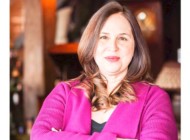
On September 26, Doyle Auctions announced the expansion of its fine art department, with the addition of Kunter Kula as the director of fine art. Born in Istanbul, Kula, a graduate of Hamilton College with a degree in economics and art history, previously worked at Sotheby’s for six years in its valuations department. Antiques and The Arts Weekly exchanged thoughts with Kula via email about his new position at Doyle and the skillsets and experiences that have led him to this new opportunity.
Congratulations on your new position as director of fine art at Doyle! How did you come across
the position?
Thank you. I’ve admired Doyle as a prominent and respected US auction house. Over the years, I’ve been closely observing their activities and developments in our business, which has ultimately led me to this exciting opportunity. When I met Laura Doyle and Joanne Porrino Mournet to discuss the role, I realized that we shared a common vision for the future.
Where did your love for fine and contemporary art begin?
Creativity is food for the soul. So, for as long as I can remember, I’ve been interested in the arts — from theater to music, art history to architecture. Having grown up in Istanbul where East meets West, the city was an exciting backdrop which exposed me to a broad range of creativity and art from Contemporary to Islamic, from the Byzantine era to the Republic. While I appreciated the arts, I also knew I was not the most talented artist. Later in college, when I interned at Christie’s in the Post-war and Contemporary Art department for a season, I suddenly discovered a path where I could see myself working closely with art and artists. This also coincided with the fresh and edgy artists making a splash in the market like Takashi Murakami, Peter Doig and Chris Ofili. As someone who is always seeking new ideas and fresh perspectives, I loved to chase after and work with contemporary artists who were pushing the envelope.

Kunter Kula, director of fine art at Doyle.
You worked for Sotheby’s for six years, in many different capacities. What knowledge and experiences are you bringing with you to Doyle from the positions you’ve held previously?
Sotheby’s was a great education for learning in the auction business. From understanding the supply and demand dynamics to acknowledging the intimately complex relationships between collectors and the objects of passion; I’ve experienced many facets of the art world. During my tenure there, I was involved in several functions of the business including providing valuations and collection management advisory to large multi-category collectors, building the firm’s “buy now” style fine art e-commerce sales and developing new collector groups in fine art and luxury categories. I learned that it’s important to challenge one’s beliefs and expectations to stay ahead of the market, which is changing faster than ever before. While the collectors’ motivations for collecting remains largely the same, taste and the way in which we experience art has evolved. The digital age has helped fuel a culture of empowerment and individualism, which in turn has expedited this evolution. I remember when I entered the art market after college, there was still a very distinct sense of “high-art” and “low-art” which did not, under any circumstances, overlap. Today, we are looking at an art world that is much more open to different voices and newcomers and is willing to blend itself with luxury. So, it’s important to stay nimble and ready to take chances on new opportunities around the corner.
You hold a bachelor of arts degree in economics and art history from Hamilton College. How do you utilize both aspects of this degree in your work today?
I am grateful for the wonderful liberal arts education I received at Hamilton, which put an emphasis on discovering connections between disciplines. Once Hamilton realized that I was keen on developing myself in the intersection of art and commerce, they provided me endless opportunities, grants and funds to travel to leading art fairs like Art Basel and learn directly from the industry. For my senior thesis, I built a hedonic price index to explain art market dynamics using econometrics. Today, I acknowledge that art can be a reflection on society, history and different conditions of human experience through time. At the same time, art also has a lot to do with economics. Artists typically sustain their practice because they can sell their creations. Therefore, the art market economy is an essential driver of new art, and patronship is its primary source of livelihood. Tangentially, I find that selling art is a form of art itself. Straddling between cultural significance and the supply and demand dynamics, one is constantly balancing between soft human skills and hard data points to achieve results.
What are you looking forward to the most in your new position at Doyle?
Doyle is an established family business built on entrepreneurial thinking and constant adaptation. I also view everything I do with an entrepreneurial spirit, and I am invested in our success and growth. Since the pandemic, the changes in the art world I’ve mentioned above accelerated dramatically. With that, there are new opportunities to engage with a younger audience and re-think our role within the art market. I am most excited about the new generations discovering the auction world for the first time. I am looking forward to partnering with collectors, their fiduciaries, dealers and artists to support and continue building this ecosystem.
— Kiersten Busch




